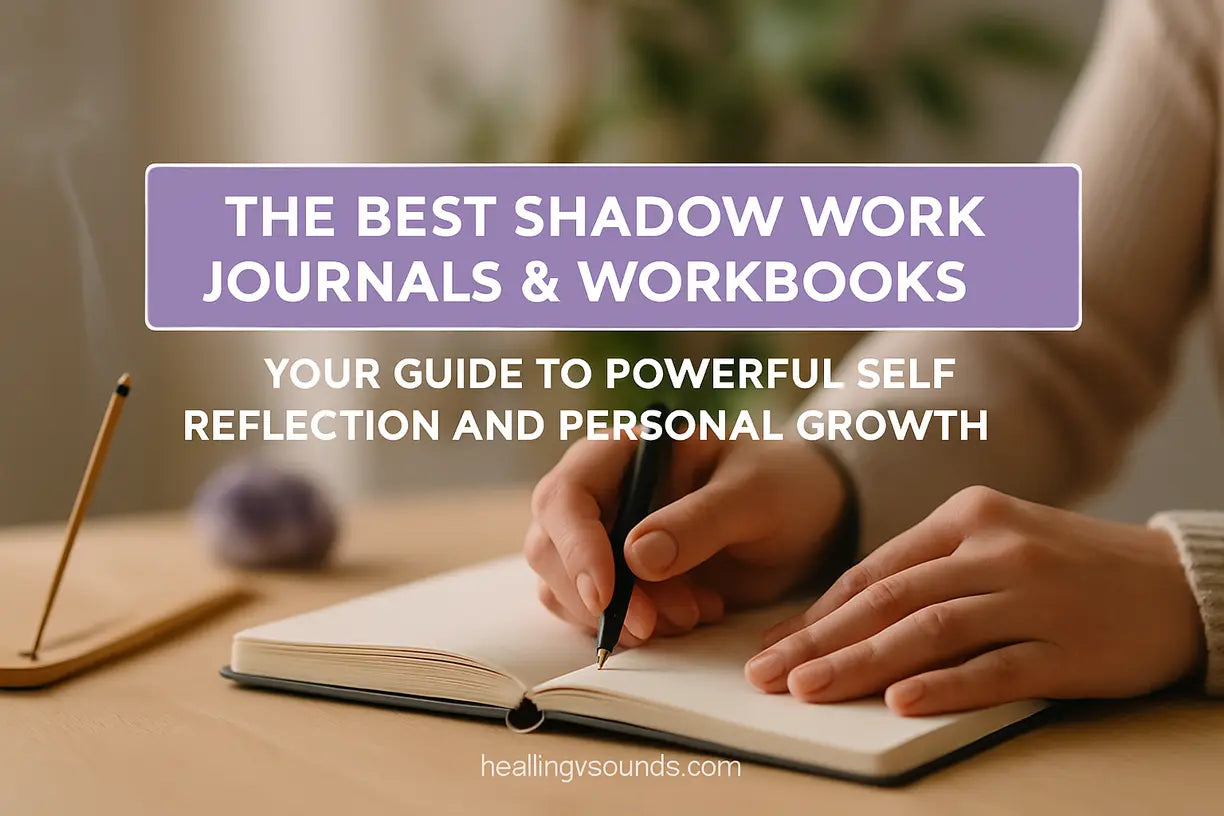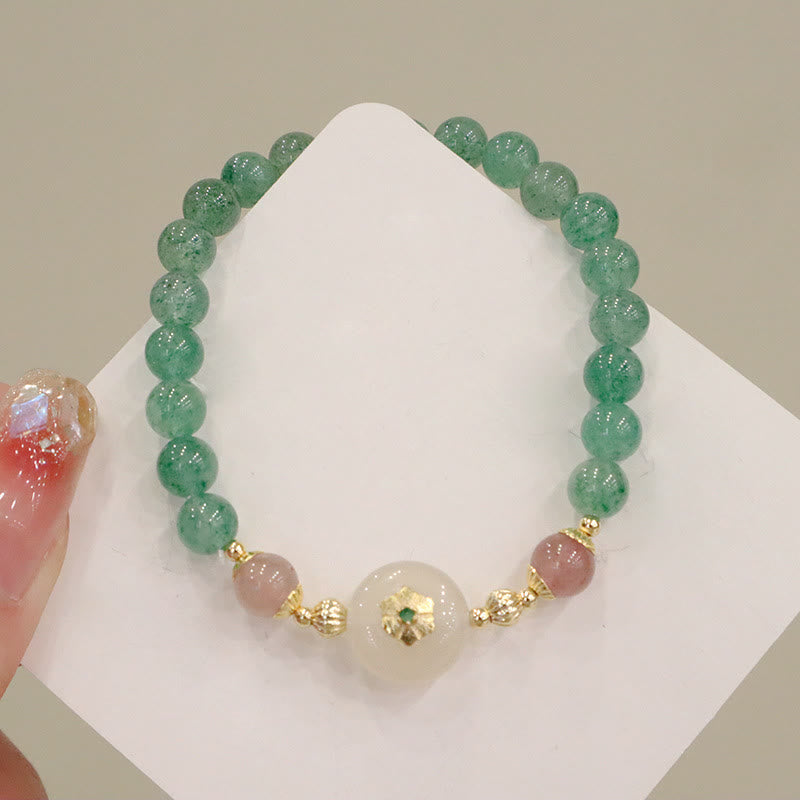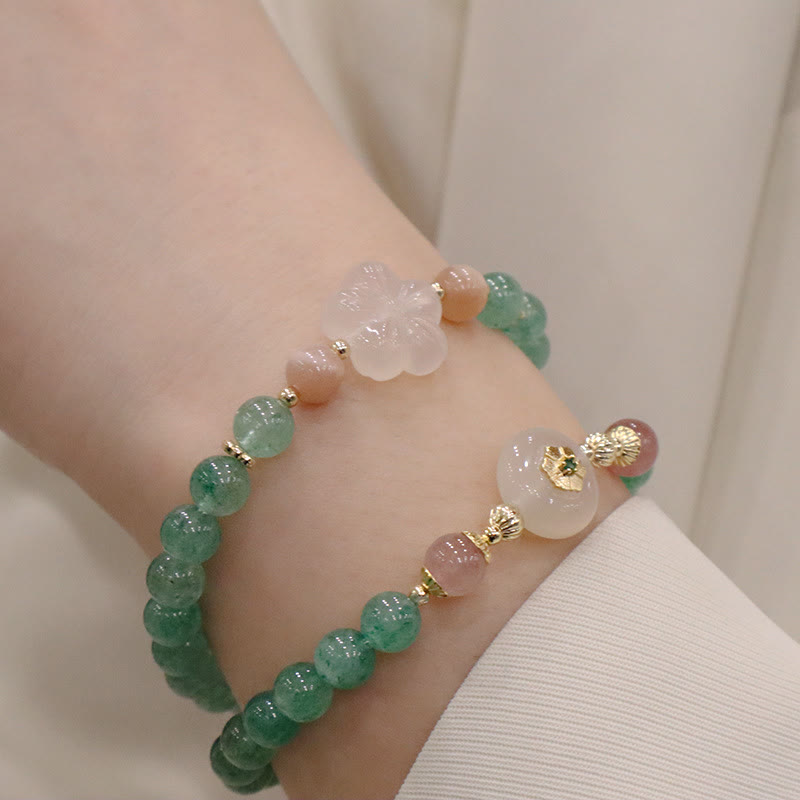Eine Reise der Selbstfindung kann zu den lohnendsten Erfahrungen Ihres Lebens gehören. Wenn Sie tiefgreifendes persönliches Wachstum und emotionale Heilung anstreben, haben Sie vielleicht schon von Schattenarbeit gehört. Diese wirkungsvolle Praxis erforscht die verborgenen, unbewussten Teile Ihrer Persönlichkeit. Das effektivste Werkzeug für diesen transformativen Prozess ist ein spezielles Schattenarbeitstagebuch . Es dient als sicherer Behälter und vertrauenswürdiger Wegweiser und hilft Ihnen, Ihre innere Landschaft zielgerichtet und klar zu erkunden.
Doch wie finden Sie bei so vielen Möglichkeiten das beste Schattenarbeitsjournal oder -arbeitsbuch für Ihre individuelle Praxis? In diesem Leitfaden erfahren Sie, was diese Journale so wirkungsvoll macht, worauf Sie bei der Auswahl achten sollten und wie Sie ein unterstützendes Ritual entwickeln, um Ihre Reise zu vertiefen. Machen Sie sich bereit, neue Ebenen der Selbsterkenntnis zu erschließen und Ihr ganzes Selbst zu akzeptieren.
Was ist Shadow Work Journaling?
Der Begriff „Schatten“ wurde vom Psychoanalytiker Carl Jung geprägt und bezeichnet jene Teile unseres Selbst, die wir unbewusst unterdrücken oder leugnen – Eigenschaften, die wir als negativ, beschämend oder inakzeptabel empfinden. Schattenarbeit ist der mutige Prozess, diese verborgenen Aspekte ins Bewusstsein zu holen. Schattenarbeitsjournaling ist die Praxis, das Schreiben als primäres Werkzeug zu nutzen, um diese Erforschung zu erleichtern. Es geht nicht darum, den Schatten zu eliminieren, sondern ihn zu integrieren, um ganzheitlicher, authentischer und selbstbewusster zu werden.
Indem Sie sich konsequent mit Anregungen und Reflexionen auseinandersetzen, können Sie die Wurzeln einschränkender Überzeugungen aufdecken, alte Wunden heilen und die in Ihrem Schatten verborgene Kraft zurückgewinnen. Diese Praxis fördert tiefes Mitgefühl für sich selbst und hilft Ihnen zu verstehen, warum Sie so denken, fühlen und handeln, wie Sie es tun.

Die Vorteile der Verwendung eines geführten Schattenarbeitsjournals
Sie können zwar jedes leere Notizbuch verwenden, aber ein spezielles Schattenarbeitsjournal bietet einzigartige Vorteile, die Ihren Fortschritt beschleunigen und ein sichereres, strukturierteres Erlebnis ermöglichen. Ein speziell erstelltes Journal ist mehr als nur Papier; es ist ein kuratiertes Werkzeug für tiefe innere Arbeit.
- Strukturierte Anleitung: Die besten Schattenarbeitsjournale bieten durchdachte Anregungen und Übungen, die Sie durch komplexe Emotionen und Erinnerungen führen und verhindern, dass Sie sich verloren oder überfordert fühlen.
- Lehrreiche Inhalte: Viele Arbeitsbücher enthalten Erklärungen zu den Kernkonzepten und helfen Ihnen, die psychologischen und spirituellen Grundlagen der Praxis zu verstehen.
- Fördert die Beständigkeit: Wenn Sie zu diesem Zweck ein spezielles Tagebuch führen, entsteht ein Ritual, das die Wahrscheinlichkeit erhöht, dass Sie bei der Übung bleiben und Schwung gewinnen.
- Bietet einen sicheren Raum: Es bestimmt ein physisches Objekt ausschließlich für Ihre tiefsten, verletzlichsten Reflexionen und verstärkt so die Idee einer urteilsfreien Zone für Ihre Gedanken.
- Verfolgt Ihren Fortschritt: Mit der Zeit wird Ihr Tagebuch zu einem Zeugnis Ihrer Reise und ermöglicht Ihnen, zurückzublicken und zu sehen, wie weit Sie auf Ihrem Weg zur Selbstakzeptanz gekommen sind.
So wählen Sie das beste Shadow Work Journal für Sie aus
Die Wahl des richtigen Journals ist eine persönliche Entscheidung, die von Ihren Bedürfnissen und Vorlieben abhängt. Berücksichtigen Sie diese Faktoren, um das perfekte Journal zu finden:
- Fragen und Übungen: Bevorzugen Sie offene Fragen, konkrete Übungen oder eine Mischung aus beidem? Schauen Sie sich nach Möglichkeit Beispielseiten an, um zu sehen, ob der Stil Ihnen zusagt.
- Struktur: Manche Tagebücher sind für den täglichen Gebrauch konzipiert, andere sind flexibler. Entscheiden Sie, ob Sie ein strukturiertes Programm wünschen oder etwas, das Sie jederzeit zur Hand nehmen können, wenn Sie Lust dazu haben.
- Ästhetik und Qualität: Sie werden eher ein Tagebuch verwenden, das Sie schön finden und in das Sie gerne schreiben. Ein strapazierfähiger Einband und hochwertiges Papier können das Erlebnis noch angenehmer machen.
- Balance zwischen Theorie und Praxis: Wenn Sie neu in der Schattenarbeit sind, kann ein Tagebuch mit einführenden Erklärungen unglaublich hilfreich sein. Wenn Sie erfahrener sind, bevorzugen Sie vielleicht eines, das sich ausschließlich auf Aufforderungen konzentriert.

Erstellen Sie ein unterstützendes Ritual für Ihre Tagebuchpraxis
Die Umgebung, in der Sie Ihr Tagebuch führen, ist genauso wichtig wie das Tagebuch selbst. Ein friedliches, bewusstes Ritual kann Ihnen helfen, sich geerdet und sicher zu fühlen, während Sie sich mit tiefgründigen Themen auseinandersetzen. Unterstützende Hilfsmittel können Ihre Praxis unterstützen und Ihnen helfen, Ihren Geist und Ihre Energie zu zentrieren. Das Setzen einer Absicht vor Beginn kann durch einen physischen Gegenstand, wie beispielsweise ein speziell für Ihre Praxis getragenes Schmuckstück, kraftvoll verankert werden.
Grünes Erdbeerquarz-Chalcedon-Blumen-Dankbarkeitsarmband
$28.90 $41.90
Steigern Sie Ihre Dankbarkeit und Ihre persönliche Einsicht – tragen Sie dieses schöne Armband beim Schattenarbeitstagebuch oder bei der Meditation.
Produkt entdeckenSich mit beruhigenden Düften und Energien zu umgeben, kann Ihren Raum auch in einen Zufluchtsort der Selbstreflexion verwandeln. Das Anzünden von Räucherstäbchen oder das Einbringen von Heilkristallen kann Ihrem Geist und Körper signalisieren, dass es Zeit ist, sich nach innen zu wenden. Diese Elemente tragen zu einer Atmosphäre der Ruhe und Konzentration bei und erleichtern die Verbindung mit Ihren unterbewussten Gedanken und Emotionen.
[Sammlungs-Schieberegler]
Verbessern Sie Ihre Praxis mit diesen Tools
$99.90
$142.90
Verbessern Sie Selbstreflexionssitzungen mit beruhigenden Aquamarin- und Bernsteinenergien für emotionales Gleichgewicht und Klarheit. Mehr erfahren ➔
$24.90
$35.90
Schaffen Sie eine friedliche Stimmung für intensives Tagebuchschreiben – leichtes Sandelholz-Räucherwerk zur Unterstützung achtsamer Schattenarbeitspraktiken. Mehr erfahren ➔
Erste Schritte: Ihre erste Schattenarbeitssitzung
Sobald Sie Ihr Tagebuch haben und Ihren heiligen Ort geschaffen haben, können Sie loslegen. Denken Sie daran: Neugier ist das Ziel, nicht Urteilsvermögen. Ihre einzige Aufgabe ist es, auf dem Papier ehrlich zu sich selbst zu sein. Wie Forscher der American Psychological Association festgestellt haben, kann allein das ausdrucksstarke Schreiben über emotionale Erfahrungen zu einer deutlichen Verbesserung des körperlichen und geistigen Wohlbefindens führen. Beginnen Sie mit einer kurzen Sitzung, vielleicht nur 10–15 Minuten, und beobachten Sie, was dabei herauskommt. Wenn Sie die verschiedenen Tagebuchtypen verstehen, können Sie auch herausfinden, welcher Weg der richtige für Sie ist.
Beispiele für wirkungsvolle Eingabeaufforderungen für das Schattenarbeitsjournal
Um Ihnen einen Ausgangspunkt zu bieten, finden Sie hier einige grundlegende Hinweise, die Sie sanft in Ihren Schatten führen sollen. Nutzen Sie diese, um Ihre Erkundung zu beginnen, und gehen Sie Ihre Antworten stets mit Mitgefühl und Offenheit an.
- Welche Eigenschaften anderer irritieren oder ärgern mich am meisten und wo sehe ich eine Widerspiegelung dieser Eigenschaften bei mir selbst?
- Beschreiben Sie eine Situation, in der ich starke Eifersucht empfand. Wovor hatte ich Angst, es zu verlieren oder nicht zu haben?
- Welches Geheimnis habe ich noch nie jemandem erzählt? Wie fühlt es sich an, es aufzuschreiben?
- Wann habe ich das Bedürfnis, eine „Maske“ zu tragen? Was verstecke ich?
- Welche familiären Muster oder Überzeugungen habe ich übernommen, die mir nicht mehr dienlich sind?
- Denken Sie an einen Fehler, den Sie zutiefst bereuen. Schreiben Sie sich selbst einen Vergebungsbrief.

Beginnen Sie noch heute Ihre Heilungsreise
Die Wahl des besten Schattenarbeitstagebuchs ist ein tiefgreifender Akt der Selbstfürsorge und ein Bekenntnis zu Ihrer persönlichen Entwicklung. Es ist ein Schlüssel zu tieferem Selbstverständnis, emotionaler Freiheit und einer authentischeren Lebensweise. Indem es Struktur, Orientierung und einen sicheren Raum für Ihre innersten Gedanken bietet, verwandelt ein Tagebuch einen einschüchternden Prozess in eine zugängliche und kraftvolle Praxis. Begeben Sie sich auf die Reise der Begegnung mit Ihrem Schatten, denn in ihm liegt das Gold Ihres wahren, integrierten Selbst. Entdecken Sie Werkzeuge, die zu Ihnen passen, und beginnen Sie die wunderbare Arbeit der Ganzheit.
Häufig gestellte Fragen zu Shadow Work Journals
Ein Schattenarbeitstagebuch ist ein spezielles Notizbuch, das oft angeleitete Hinweise und Übungen enthält und speziell für die Erforschung des Unterbewusstseins entwickelt wurde. Es ist ein Werkzeug, das Ihnen hilft, die verborgenen oder unterdrückten Teile Ihrer Persönlichkeit – Ihr „Schattenselbst“ – zu identifizieren, zu verstehen und zu integrieren, um emotionale Heilung und Selbsterkenntnis zu fördern.
Suchen Sie sich zunächst einen ruhigen, ungestörten Ort. Wählen Sie ein Tagebuch, das sich für Sie gut anfühlt, sei es ein geführtes Arbeitsbuch oder ein leeres Notizbuch. Setzen Sie sich ein Ziel für die Sitzung, z. B. sich selbst mit Neugier und Mitgefühl zu begegnen. Beginnen Sie mit einer einfachen Aufforderung und schreiben Sie 10–15 Minuten lang frei und ohne Vorurteile. Kontinuität ist wichtiger als Dauer.
Ja, für viele Menschen lohnt es sich absolut. Ein spezielles Schattenarbeitsjournal bietet Struktur und Anleitung , die den anspruchsvollen Prozess der Selbstbeobachtung sicherer und leichter handhabbar machen. Die kuratierten Anregungen helfen Ihnen, Bereiche zu erkunden, die Sie alleine vielleicht nicht in Betracht gezogen hätten, was zu tieferen Erkenntnissen und einer konsequenteren, fokussierteren Praxis führt.
Gute Einstiegsthemen konzentrieren sich auf Auslöser, Projektionen und Muster. Beispiele: „Welche Eigenschaften anderer lösen bei mir eine starke negative Reaktion aus?“, „Beschreiben Sie eine Situation, in der Sie tiefen Neid empfanden und was dies über Ihre eigenen Wünsche verrät.“ und „Welchen wiederkehrenden Traum oder Albtraum hatten Sie und was könnte er symbolisieren?“
Ein Beispiel könnte mit der Frage beginnen: „Wann fühle ich mich wie ein Hochstapler?“ Schreiben Sie dann frei über Situationen, in denen Sie sich wie ein Hochstapler fühlen. Sie könnten herausfinden, woher dieses Gefühl stammt – vielleicht von Kritik in der Kindheit – und seine Berechtigung hinterfragen. Ziel ist nicht, das Gefühl in einer Sitzung zu lösen, sondern einfach das Gefühl und seine Wurzeln zu beobachten, ohne sich selbst dafür zu verurteilen.







